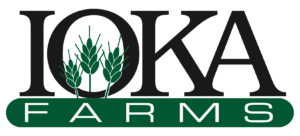Barley
Spring
Camas – rough-awned, good straw strength, high yielding. Feed
Hayes – hooded, shorter, good lodging resistance, mid-late maturity. Hay
Metcalfe – high yielding, high enzyme levels, rapid throughput, high fermentable extract. Malting
Poco – awned, short height, stiff straw, fast maturing. Feed
Steptoe – mid-tall, rough-awned, stiff straw, good lodging resistance. Feed
Winter
Oats
Spring
Cayuse – awned, light yellow kernels, resistant to lodging, medium-early maturity, fair tolerance to barley yellow dwarf virus. Average test weight, medium-short stiff straw, released 1996 Washington. Hay, Green Chop and Forage
Everleaf – erect growth, dark foliage, delayed heading, excellent resistance to rust, very good standability, high yielding, high quality. Haylage and Grazing
Kanota – awned, taller than most grain cultivars, early season, shatters easily, finer stems, medium height, some resistance to yellow dwarf, good straw strength, good test weight, grown for hay, released 1920s Kansas. Hay and Forage
Monida – similar to Otana Oats, good lodging resistance, moderate straw strength, susceptible to crown rust, mid-season, preferred milling type, less than Otana in test weight, superior to Cayuse, released 1985 Idaho. Forage and Grain
Montezuma – red hay oat, medium height, very good lodging and shattering resistance, strong straw, resistant to yellow dwarf and most leaf diseases, high test weight, leafy, earliest maturing of California oat varieties, high grain yield, susceptible to rusts when conditions are favorable, released 1967 California. Hay and Forage
Otana – medium-tall, high test weight, mid-season, moderate lodging resistance, moderately stiff straw, resistant to victoria blight, susceptible to shattering, stem rust and yellow dwarf, released 1976 Montana. Green Chop, Hay and Silage
Sierra – medium height, coarse stemmed, early maturing, leafy broad leaves, relatively tolerant to barley yellow dwarf virus, high grain yield, shatter resistant. Hay and Grain
Swan – Lightly awned, good yellow dwarf resistance, height similar to Cayuse, red forage oat, early maturity, dual purpose grain/hay, developed in western Australia. Hay and Grain
Texas Red: Spring planted in the Willamette Valley, hay oat. Hay
Winter
Walken – few awns, excellent straw strength, late maturing, yields superior to most winter oats, good winter survival, good lodging resistance, potential for high forage and grain yield. Hay, Grain and Grazing
Wheat
Winter
Ryegrain
Triticale
Spring
Merlin – awnless, intermediate growth habit, growth rate equal to Dirkwin wheat, later heading than triticale “118”. Hay and Silage
Winter
Luoma – awnletted, standard height. Feed Grain, Grazing, Hay and Silage
Trical 102 – awnletted, late maturing. Grazing, Hay and Silage
Bromes
Atom Prairie Grass – a perennial grass similar to brome with high annual dry matter production and excellent animal performance
Gala Grazing Brome – a perennial grass with excellent seedling vigor, dense tillers, and endophyte free
Smooth Brome – a perennial grass with rapid recovery after cutting, persistence, and early growth
For more information on Atom Prairie Grass or Gala Grazing Brome, visit PGG Seeds website. Ioka Marketing is the US distributor for PGG Seeds US.
Kentucky Bluegrass
Ginger – excellent early spring greenup, early maturity, aggressive rhizomes, tolerant of close grazing, palatable and nutritious for all livestock.
Orchardgrass
Ambassador – Early flowering, highly palatable, winter hardy
Hallmark – Early maturing, vigorous, high yielding, good resistance to leaf disease, good seed yield
Paiute – Somewhat more drought tolerant, abundant basal leaves and leafy upright stems, low growing, cool season, early maturing
Pennlate – Late maturing, high yielding, improved stand persistence, ideal for alfalfa/clover mixes
Potomac – Productive, persistent, rust resistant, early maturing, ideal as single species hay
Ryegrass
Winter Star II Tetraploid Annual – A tetraploid annual ryegrass suitable for quick, early feed with improved late season quality for silage, hay production and grazing.
Gulf Annual – An annual ryegrass that is an erect, robust cool-season bunch grass with a heavy, extensive, fibrous root system.
Crusader Italian – An Italian ryegrass that is flexible and forgiving with rapid establishment and vigorous growth.
Kingston Perennial – A resilient, diploid perennial ryegrass adapted to a broad range of soil and climatic conditions.
Ohau Tetraploid Hybrid: An Italian perennial hybrid ryegrass that has strong early spring activity and a high tiller density for persistent, productive pasture.
One50 Perennial – A late-heading diploid perennial ryegrass with outstanding dry matter production and that is suitable for all classes of livestock.
For more information on these Crusader Italian, Kingston Perennial, Ohau Tetraploid, and One50 Perennial, visit PGG Seeds website. Ioka Marketing is the US distributor for PGG Seeds US.
Sorghum Sudan
Tall Fescue
Fawn – Cool season, heat and drought tolerant
Flecha – Winter-active, drought tolerant, persistent. Viable alternative to harding grass, alfalfa or orchard grass
For more information on Flecha Tall Fescue, visit PGG Seeds website. Ioka Marketing is the US distributor for PGG Seeds US.
Timothy
Climax – leafy, fine-stemmed, developed in Canada, does not tolerate wet or drought soils, becomes weak under close and continuous grazing, high yielding, high quality, highly palatable.
Brassicas
Graza Radish – a drought tolerant radish that has rapid regrowth and can be grazed multiple times
Hunter Leaf Turnip – a fast establishing crop that can be grazed as early as 6-8 weeks
New York Turnip – a winter turnip with large bulb, high leaf production and regrowth potential
Winfred Brassica – a rape with greater versatility and the ability to be grazed multiple times
For more information on these verities, visit PGG Seeds website. Ioka Marketing is the US distributor for PGG Seeds US.
Clovers
Balansa – an annual legume native to the northeastern Mediterranean region with quick germination, a multi-branched rosette, and saline soil tolerance. Grazing
Berseem – a winter or summer annual with fast growth, high production potential under irrigation, heavy N production, and the least winter hardy. Chopped Forage and Grazing
Crimson – a winter or summer annual with rapid, robust growth, weed suppression, and source of N. Hay and Grazing
Haifa White – a highly productive perennial with heat tolerance and persistence. Adapted to a wide range of soil types. Combines well with many perennial grasses. Forage
Medium Red – a short-lived perennial with adaption to a wide range of soil types and conditions, quick to establish, and winter hardy. Forage, Grazing and Wildlife
Huia White – an intermediate white clover with more aggressive tillers, profuse flowering, and heat tolerance. Palatable and digestible with high crude protein. Grazing and Forage
Persian – a winter annual that tolerates a range of soils, N-fixing, and improves pest and disease control. Pasture and Hay
Rose – a self-seeding winter annual with a wide variety of climatic and soil conditions. Hay, Pasture and Wildlife
Strawberry – a perennial that is hardy and tolerant of harsh environmental conditions than white clover. Grazing
Sub – a reseeding cool season annual that has strong persistence in orchards and pastures, excellent weed suppression, and high palatability. Grazing
Vetch
Common – Slender, viny plant, compound leaves, tendrils for attachment and support, bigger flowers, less winter hardy than hairy vetch. Well-adapted to moderately to well-drained, fertile soils.
Hairy – Winter dormancy, fast growth in the spring, will re-seed if left to go to maturity. Winter ground cover, biomass production, nitrogen fixing.
Peas
4010 – Speckled forage peas with excellent forage yields and standability. A leafy variety that produces significant biomass.
Austrian Winter – Winter-hardy field peas with bountiful biomass, moisture efficiency, and quick growth. A great nitrogen source and provides enhancements to soil quality. Often seeded with triticale and other small grains for a boost to forage.
Dundale – A spring field pea used to produce organic matter and nitrogen in cover crops or as forage. Dundale is drought tolerant and highly adaptable to a wide range of soils.
Faba Beans
Herbs
Choice Chicory – a perennial plant with leafy growth, a relatively deep taproot, and tolerance to drought conditions. Grazing
Tonic Plantain – a high production herb with excellent winter growth, high dry matter production, exceptional animal growth rates, and high trace element content. Grazing
For more information on these verities, visit PGG Seeds website. Ioka Marketing is the US distributor for PGG Seeds US.
Honoring the past, Ioka is named from a Chinook Indian word meaning “a thing of loveliness” or “a cherished piece of land noted for its beauty, health, and fertility”.



